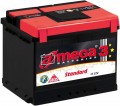—
Serviceable. Only classic lead-acid batteries (see "Type") are serviceable: they can be easily identified even externally by the presence of removable caps that provide access to the internal compartments with electrolyte. The latter is a mixture of sulfuric acid and water, and with each charge, some of this water "boils off" (breaks down into oxygen and hydrogen and evaporates). This occurs especially intensively during overcharging or charging at increased voltage. Battery maintenance consists of periodically replenishing the water supply in the electrolyte—without this, the decrease in its level leads to plate damage due to contact with air, which irreparably worsens the battery's characteristics. On average, maintenance needs to be carried out 1-2 times a year (15-20 thousand km mileage for a passenger car), and these periods usually coincide with scheduled maintenance. However, this value may vary depending on the characteristics of both the battery itself and its operation; more detailed information is usually contained in the instructions for specific models. "Refilling" should be done exclusively with distilled water, as even relatively small amounts of foreign impurities can damage the plates.
—
Maintenance-free. As the name suggests, such batteries do not require the maintenance described above; this is achieved by several methods, in particular by filling the electrolyte with a reserve f
...or the entire service life or using gel (see "Type"). Despite the obvious advantages due to ease of use, maintenance-free batteries have one drawback: they are much more sensitive to deep discharge (capacity decreases), and, accordingly, they are less tolerant of cold and long downtimes.
